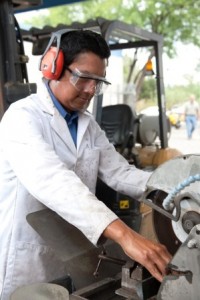 Wet-bulk and dry-bulk density and porosity measurements
Wet-bulk and dry-bulk density and porosity measurements
The buoyancy (specific gravity) method is used to determine bulk rock densities after the samples are saturated with tap water under a vacuum. Subsequently, the samples are dried by oven-baking at 250 degrees F for a minimum of 12 hours. Dry-bulk densities are determined by dry weight divided by the buoyancy- determined volume of each sample. Porosities are calculated from water-saturated weights, dry weights, and the buoyancy-determined volume.
Accuracy
Accuracy of the buoyancy density measurement is better than 0.01 grams per cubic centimeter (10.0 SI units). The results of the laboratory density determinations are reported in grams per cubic centimeter.
The SI units conversion is:
D = 1000.0 D
3 3
(kg / m ) (gm / cm )
Applicable samples
Density measurements can be made on bi-cylindrical cores, grab samples, or drill cores. Cuttings or sand samples can be measured, but with some loss in accuracy. Very large samples will require coring or breaking prior to the density determination. Moisture saturation under vacuum is required for reliable data.

